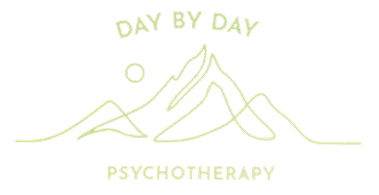
6/28/2025
By Elizabeth Travis, LCSW
“You weren’t there.”
That phrase—“You weren’t there”—is simple, yet it carries a deep emotional load: grief, disappointment, and perhaps some unspoken resentment.
As a mixed Chinese American therapist in my mid-thirties, I often reflect on how the intersection of culture, spirituality, and silence was not only overlooked during my upbringing but not made comfortable to discuss openly. I wasn’t allowed to refer to myself as Chinese or mixed without facing backlash—from peers to family to strangers in the laundromat. Not being around Chinese relatives in my life created another stratum of loss, deeper than I could express up until recently.
Professionally and personally, I’ve come to understand the weight of that kind of absence. It isn’t only physical, or emotional. It’s also generational. It shapes who we become, how we relate, and how we heal.
The Invisible Threads: How Distance Wounds
My story echoes those of many clients: growing up between two cultural worlds—red envelopes and Christmas stockings. There were always more questions than answers.
Add in the challenges of mental illness, cross-country moves, and emotional avoidance, and the misunderstandings become deeply embedded across generations.
But distance doesn’t always mean disconnection.
And connection doesn’t always require agreement.
Challenging the Narratives
Cognitive Behavioral Therapy (CBT) offers simple yet powerful tools to shift the internal narratives that keep us stuck. If you’ve ever thought:
- “They never cared about me.”
- “Religion always tears families apart.”
- “It’s too late to fix this.”
…then these reframes are for you:
🧠 Common Thought Distortions (and How to Reframe Them)
1. Overgeneralization
“Religion always ruins things.”
🌀 Reframe: “In my experience, religion caused division—but that doesn’t mean it’s always harmful. Others have used faith to find healing.”
2. All-or-Nothing Thinking
“I wasn’t there, so I can’t make it right.”
🌀 Reframe: “I missed some important moments, but I can still show up now in consistent, caring ways.”
3. Personalization
“It’s my fault the family drifted apart.”
🌀 Reframe: “There were many factors. I can’t change the past—but I am responsible for how I show up now.”
🌱 Reconnection: Not a Grand Gesture, but a Gradual Practice
Healing doesn’t have to be a grand, cinematic reunion. Sometimes it starts with a quiet text or an old photo shared. Here are practical ways to reopen connection:
🔑 Ways to Reconnect (Without Forcing Forgiveness)
- Send a “thinking of you” message—without expectations.
- Share a memory from before the rift. Nostalgia can bridge divides.
- Gently name the pain: “I know we haven’t been close. I’d like to change that, if you’re open.”
- Respect boundaries—yours and theirs. Healing isn’t self-abandonment.
- Create small rituals: send a birthday card, light a candle, or watch a show together online.
- Relearn what they believe. You don’t have to agree—just understand.
- Try therapy together, or write a letter you never send. Healing starts within.
Final Thoughts
There’s no one-size-fits-all answer to healing family estrangement. Sometimes the repair happens with the other person. Other times, it happens quietly within ourselves and our environment.
You can’t change the past—but you can shape what comes next.
Have you found ways to reconnect with estranged family or heal internally from that loss? Share your story in the comments—or send me a private message.
With compassion,
Elizabeth Travis, LCSW
